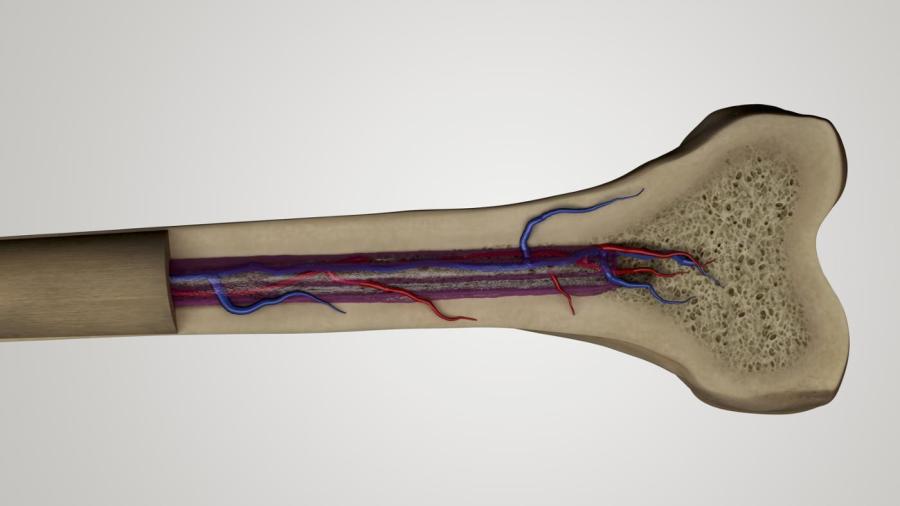What Is the Composition of Bone?

Living bone contains about 10 to 20 percent water and 60 to 70 percent bone mineral, as explained by the University of Cambridge. The remaining material is mostly collagen with trace amounts of proteins and inorganic salts.
The University of Cambridge also explains that bones contain three special cells called osteoblasts, osteocytes and osteoclasts. Osteoblasts are responsible for making the collagen-rich substance osteoid, which is key in building bone. Osteocytes are former osteoblasts that go beneath the surface of the bone and maintain its structure. Osteoclasts are responsible for bone resorption. These cells travel around the bone to areas in need of resorption.
The University of Cambridge indicates that there are two types of bone in the human body: cortical, or compact, bone and cancellous bone, which is also known as spongy or trabecular bone. Cortical bone accounts for 80 percent of the body’s bone mass. This type of bone forms a cylindrical shaft around the marrow in the central part of the bone. Cancellous bone makes up only 20 percent of the body’s bone mass, but it has a much higher surface area because of its higher porosity and honeycomb structure, according to the University of Cambridge. Cancellous bone is found at both sides of long bones at the articulating ends, such as the femoral head on top of the thigh bone.





